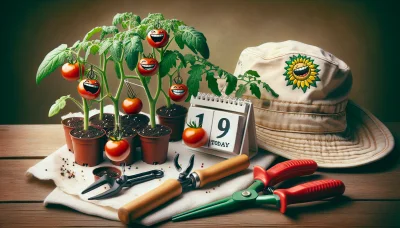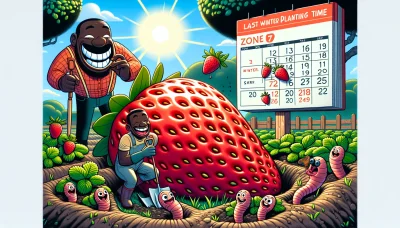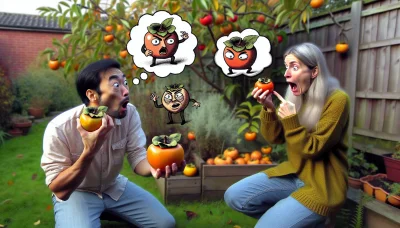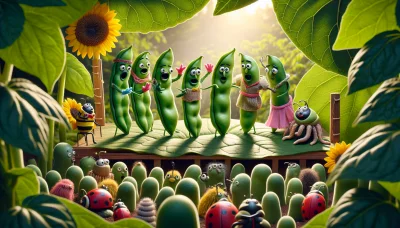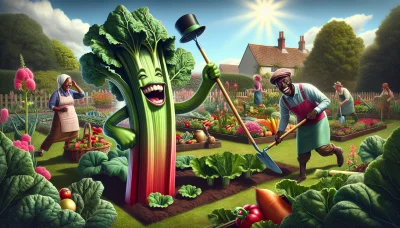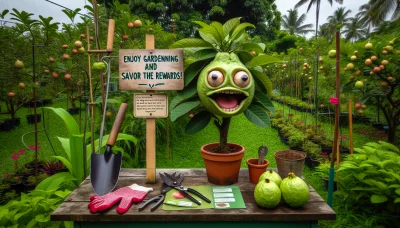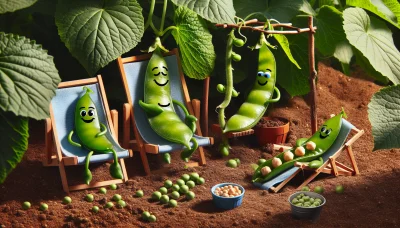Raw green beans Quiz
Test Your Knowledge
Question of
Introduction to Raw Green Beans
Raw green beans, often referred to as snap beans or string beans, are a versatile and nutritious vegetable that can be a crisp, flavorful addition to any meal. Packed with vitamins and minerals, they are particularly rich in Vitamin C, dietary fiber, and folate, making them an excellent choice for those looking to boost their nutrient intake. In addition to their health benefits, raw green beans are low in calories and can be a great component in a weight management diet.
When it comes to growing green beans, they are relatively easy to cultivate, making them a favorite among home gardeners. They thrive in well-drained soil with plenty of sunlight and require regular watering, especially as the pods begin to form. Green beans can be grown in both bush and pole varieties, with the former being more compact and the latter requiring support to climb. Harvesting typically occurs in the late summer to early fall, when the pods are firm and have reached their full size but are still tender.
Choosing the Right Variety for Your Garden
When it comes to planting green beans in your garden, the variety you choose can significantly impact both the yield and the flavor of your harvest. For those who enjoy consuming green beans raw, selecting a variety that is tender, flavorful, and suitable for your climate and garden space is essential. Among the popular varieties for raw consumption are the 'Blue Lake', 'Contender', and 'Purple Podded' beans, known for their crisp texture and sweet taste. When selecting the best type for your garden, consider the climate; some varieties are more heat-tolerant, while others thrive in cooler temperatures. Additionally, consider your garden space; bush varieties may be better for smaller gardens, whereas pole varieties require more vertical space but often produce a higher yield. With the right variety, you can enjoy fresh, tasty green beans right from your garden.
Planting and Caring for Your Green Beans
- Choose the Right Time: Plant green beans in the spring, after the last frost, when the soil is warm.
- Select a Sunny Spot: Green beans thrive in full sunlight, so pick a part of your garden that gets at least 6-8 hours of sunlight daily.
- Prepare the Soil: Loosen the soil to about a foot deep and mix in compost to enrich it with nutrients.
- Sow the Seeds: Plant the seeds about 1 inch deep and 2 inches apart in rows. Space the rows about 18 inches apart.
- Water Gently: After planting, water the soil gently but thoroughly to moisten it without washing away the seeds.
- Keep the Soil Moist: Water the plants regularly, especially as they start to flower and produce beans, to keep the soil consistently moist.
- Support Climbing Varieties: If you're growing pole beans, provide supports like stakes or trellises for the vines to climb.
- Monitor for Pests: Keep an eye out for common pests like bean beetles and manage them promptly to prevent damage to your plants.
- Harvest Regularly: Once the beans are firm and have reached a desirable size, start harvesting by gently pulling them from the plant. Regular harvesting encourages more production.
- Mulch to Retain Moisture: Apply a layer of mulch around the plants to help retain soil moisture and control weeds.
Common Pests and Diseases
Green beans are susceptible to a variety of pests and diseases that can hinder their growth and productivity. Among the most common pests are aphids, spider mites, and Mexican bean beetles. Aphids and spider mites suck the sap from the leaves, causing them to yellow and wilt, while Mexican bean beetles chew on the leaves, leaving behind skeletonized foliage. To combat these pests organically, gardeners can introduce beneficial insects such as ladybugs and lacewings, which prey on aphids and mites. Neem oil and insecticidal soaps can also be effective treatments when applied directly to the affected areas.
As for diseases, green beans often fall victim to powdery mildew, rust, and bean mosaic virus. Powdery mildew presents as white, powdery spots on leaves and can be treated with organic fungicides or by making a homemade mixture of baking soda and water. Rust causes reddish-brown spots on leaves and can be managed by removing and destroying infected leaves and improving air circulation around the plants. Bean mosaic virus, which causes mottled leaves and stunted growth, has no cure, so prevention is key. This includes using virus-free seeds and practicing crop rotation to minimize disease spread.
Preventative measures such as proper spacing to ensure good air circulation, watering at the base of the plants to keep foliage dry, and regular monitoring for early signs of pests and diseases are crucial steps in maintaining healthy green bean plants organically.
Harvesting and Storing Raw Green Beans
To properly harvest green beans for raw consumption, wait until the beans are firm, plump, and have reached their full size, but before they become too large and tough. The best time to pick them is in the morning when temperatures are cooler. Gently hold the bean with one hand and the stem with the other, then carefully pull or snap the bean off without damaging the plant. To store the green beans and maintain their freshness, first, wash them in cold water and pat them dry. Then, trim off the ends and place them in a plastic bag or container. Store the container in the crisper drawer of your refrigerator. Properly stored, fresh green beans can last for about a week. For longer storage, blanching and freezing green beans is an effective method to preserve their quality.
Health Benefits of Raw Green Beans
- High in Fiber: Supports digestive health and promotes regular bowel movements.
- Rich in Vitamins: Packed with vitamins A, C, and K, which are essential for immune function, vision, and blood clotting.
- Low in Calories: An excellent addition to a weight management diet.
- Contains Antioxidants: Offers protection against oxidative stress and reduces the risk of chronic diseases.
- Source of Minerals: Provides essential minerals like iron, calcium, and magnesium for healthy bones and energy levels.
- Supports Heart Health: The fiber and antioxidants help in managing cholesterol levels and reducing heart disease risk.
- Hydrating: High water content helps to keep you hydrated.
- Crunchy and Satisfying: Can be a satisfying, crunchy snack that's both nutritious and low in calories.
Delicious Raw Green Bean Recipes
| Recipe | Ingredients | Preparation Steps |
|---|---|---|
| Green Bean Salad | Raw green beans, cherry tomatoes, feta cheese, red onion, olive oil, lemon juice, salt, and pepper | 1. Trim the ends off the green beans. 2. Thinly slice the red onion. 3. Halve the cherry tomatoes. 4. Combine all ingredients in a bowl. 5. Dress with olive oil, lemon juice, salt, and pepper to taste. 6. Toss everything together and serve. |
| Green Bean and Almond Slaw | Raw green beans, almonds, carrots, red cabbage, apple cider vinegar, honey, mustard, salt, and pepper | 1. Slice green beans and carrots into thin strips. 2. Shred the red cabbage. 3. Chop the almonds. 4. Mix vinegar, honey, mustard, salt, and pepper in a separate bowl for the dressing. 5. Combine green beans, carrots, cabbage, and almonds in a large bowl. 6. Pour dressing over the vegetable mix and toss well. |
| Green Bean Gazpacho | Raw green beans, cucumber, green bell pepper, garlic, white onion, white wine vinegar, olive oil, salt, and ice water | 1. Chop green beans, cucumber, bell pepper, and onion into small pieces. 2. Blend these vegetables together with garlic, vinegar, olive oil, and salt until smooth. 3. Gradually add ice water to achieve desired consistency. 4. Chill in the refrigerator for at least 2 hours before serving. 5. Serve cold, garnished with additional chopped green beans and a drizzle of olive oil if desired. |
| Crunchy Green Bean Dippers | Raw green beans, hummus, or your choice of dip | 1. Wash and trim the ends off the green beans. 2. Serve raw green beans with a side of hummus or your favorite dip. 3. Enjoy as a healthy, crunchy snack. |


